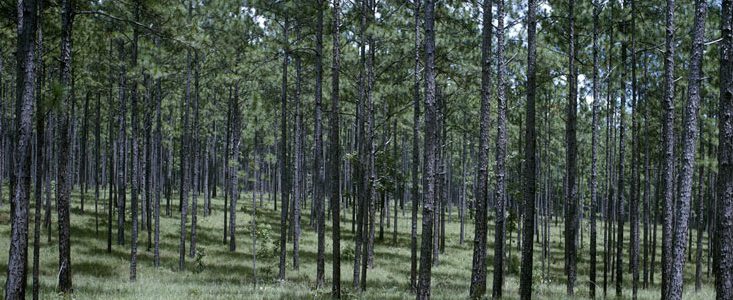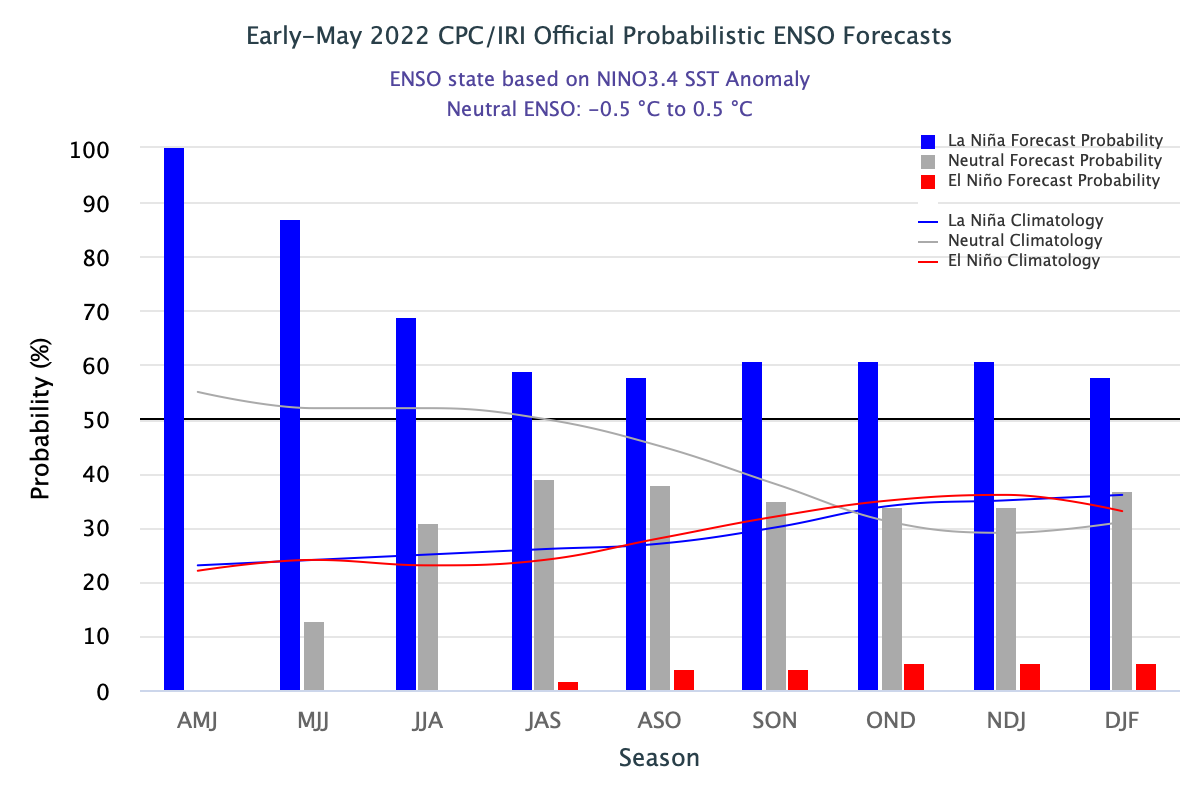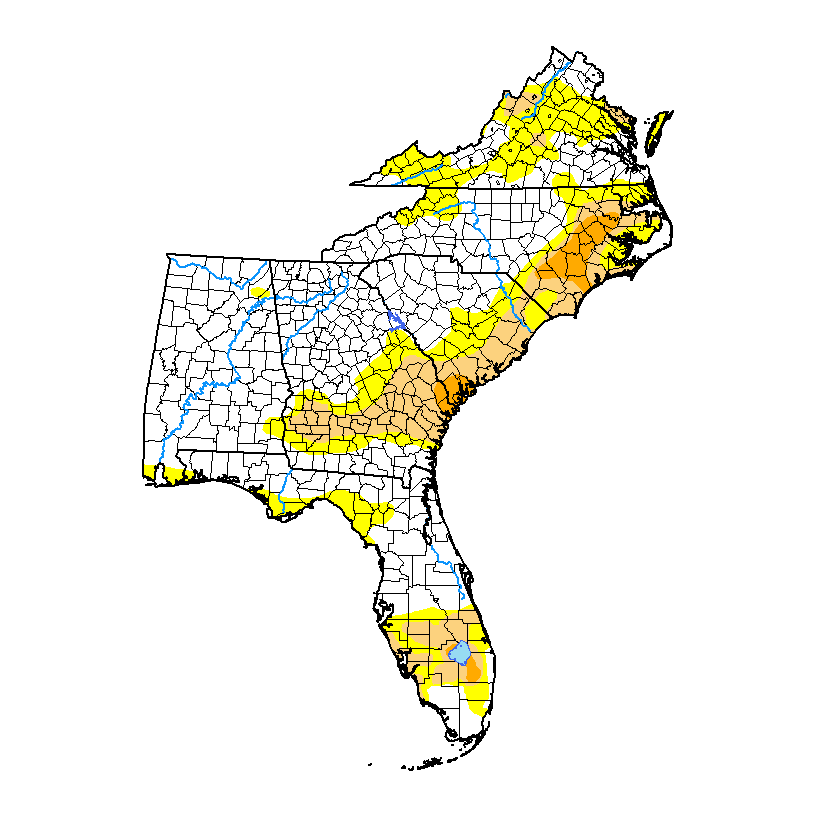May 2022
-

While many people think of the Pacific Northwest as the main area of lumber production, the economic reality is that the industry’s center of gravity has shifted to the South, according to a recent article in Blue Mountain Eagle. According to the article, the NW’s thunder has been stolen by the South’s abundant timber supplies…
-

The latest La Nina outlook was released by NOAA today. It shows that La Nina is remaining strong and is now the most likely state of ENSO (El Nino Southern Oscillation) to continue through the summer and into the fall. This means that if this forecast is good, we are likely to see warmer and…
-

If you have a dog (or cat) that you take on walks, you have probably heard that you have to be careful of burning their feet on a day that is very warm, since pavement can get hotter than the air. Here is a table that compares surface temperatures of grass, air, and various kinds…
-

The latest Drought Monitor, released this morning, shows that an area of severe (D2) drought has been added to eastern Georgia and southern South Carolina due to continuing dryness and above-normal temperatures. Dry conditions decreased somewhat in Virginia and Florida and expanded slightly in North Carolina and Alabama. There was no change in drought status…
Posted in: Drought -

The drought in the western US is so strong and long that water availability has been severely cut to farmers this year, leaving them without sufficient water for some of their crops. As a result, many farmers may lose their orchards or ability to water vegetable crops. This has caused the farmers there to protest…
Posted in: Climate and Ag in the news -

The last few springs have been rough on fruit farmers in the Southeast, with warm winters speeding up the development of flowers and fruit, followed by frosts that are occurring near the long-term average date or even later. This has been true not only in the Southeast but in other parts of the country too.…
Posted in: Climate and Ag in the news -

NOAA’s latest monthly climate summary for the United States was released yesterday. It shows that for the U.S. as a whole, the temperature and precipitation were near normal, with the temperature coming in 0.4 F below normal. Precipitation was just 0.06 inches above the long-term average. You can get more information at Wildfires, severe weather…
Posted in: Climate summaries